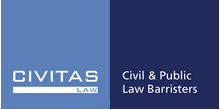In a bid to end witness statements which read like submissions, the Business and Property Court have decided to tackle “over lawyer’ed” witness statements head on in a new practice direction. The Practice Direction applies to new and existing proceedings, but only to witness statements signed on or after 6.4.21. It does not apply to affadavit evidence, or evidence in a witness statement other than a trial witness statement. Certain types of cases are excluded (See 1.3) including proceedings falling within CPR 57 and 64.
Trial statements should comply with the Statement of Best Practice in the Annex to the Practice Direction and with any relevant Court Guide. Where there is a conflict between the two, the former prevails.
The confirmation of compliance makes clear that the witness statements must not set out lawyerly arguments or to go through the document in the case. The certificate of compliance must be signed by the legal representative.
Sanctions are set out in Section 5. Failure to comply with the Practice Direction may lead to the Court, of its own motion or on application, applying sanctions namely:
(1) refuse to give or withdraw permission to rely on, or strike out, part or all of a trial witness statement,
(2) order that a trial witness statement be re-drafted in accordance with this Practice Direction or as may be directed by the court,
(3) make an adverse costs order against the non-complying party,
(4) order a witness to give some or all of their evidence in chief orally.
The Appendix sets out that the witness may refresh their memory by being shown a document but only if the witness created or saw the document while the facts evidenced or referred to in the document were still fresh in their mind, so that they would have known if they were accurate or inaccurate. Para 3.4 sets out that “ A trial witness statement should refer to documents, if at all, only where necessary.” Where a trial witness statement does refer to a document, it should not exhibit the document but should give a reference enabling it to be identified by the parties, unless it is a document being produced or disclosed by the witness that has not been disclosed in the proceedings.
Witness statements should be concise. They should not:
(a) Quote at length from documents to which reference is made
(b) Seek to argue the case
(c) Take the Court through the documents/ set out a narrative from the documents
(d) Include commentary on other evidence in the case
Before being asked to provide evidence, or prepare/consider any draft statement, the witness should be told the purpose and proper content of a statement. This will partly be met by ensuring that the witness has read the witness statement confirmation.
An interview to obtain evidence form a witness should be recorded as fully and accurately as possible by contemporaneous note or other durable recording. This follows on from a description of the way in which evidence should be extracted from witnesses including rules on open questioning and refreshing memory. It is anticipated that in practice this will operate by the client providing a first account. The Lawyer may then show the person relevant documents, and the client may then change or retain his evidence. However, this should all be documented in the witness statement e.g. first version I attended at site with Mr Jones. Having been shown my contemporaneous note at the time, I now recall that when I attended site with Mr Jones, Mrs Jones was also present.
There are clearly cost budgeting factors to be taken into consideration as a result of the Practice Direction. In addition, the sanction of requiring live evidence in chief will impact significantly the trial time estimate in the event that it is imposed.
